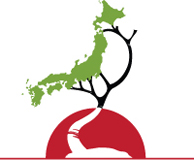Plant-Specific Safety Enhancements After Fukushima
 The following alphabetical list of operating nuclear power reactors provides access to plant-specific actions related to the Japan Nuclear Accident at Fukushima Dai-ichi. Specifically, these actions include Orders and Requests for Information (RFIs) issued by the U.S. Nuclear Regulatory Commission (NRC), as well as the related responses submitted by the plant licensees. When a licensee has completed the actions and the NRC completes the appropriate reviews, a completion letter is issued. This letter documents the actions taken by a licensee, the NRC responses related to those actions, and acknowledges that the actions related to the Fukushima Lessons-Learned activities have been completed for that site.
The following alphabetical list of operating nuclear power reactors provides access to plant-specific actions related to the Japan Nuclear Accident at Fukushima Dai-ichi. Specifically, these actions include Orders and Requests for Information (RFIs) issued by the U.S. Nuclear Regulatory Commission (NRC), as well as the related responses submitted by the plant licensees. When a licensee has completed the actions and the NRC completes the appropriate reviews, a completion letter is issued. This letter documents the actions taken by a licensee, the NRC responses related to those actions, and acknowledges that the actions related to the Fukushima Lessons-Learned activities have been completed for that site.
For an overall summary of the status of post-Fukushima lessons-learned implementation for all Operating Power Reactors, please see below:
- Post Fukushima Order Implementation Status (January 8, 2021)
- Post Fukushima Flooding and Seismic Hazard Reevaluation Status (January 8, 2021)
In the summer of 2019, two letters were issued to the licensees for all operating power reactors which discussed the staff's treatment of reevaluated hazard information under 10 CFR 50.54(f) (also called "binning" letters). These letters reflect the Commission's direction in the Affirmation Notice and Staff Requirements Memorandum dated January 24, 2019, associated with SECY 16 0142, "Draft Final Rule – Mitigation of Beyond-Design-Basis Events [MBDBE] (RIN 3150-AJ49)".
The final Mitigation of Beyond-Design-Basis Events (MBDBE) rule was published in the Federal Register on August 9, 2019 (84 FR 39684) with an effective date of September 9, 2019. See also the supporting documentation for the final rule, a timeline of NRC response actions and an archive of safety enhancement information.
Page Last Reviewed/Updated Tuesday, December 07, 2021
Page Last Reviewed/Updated Tuesday, December 07, 2021


